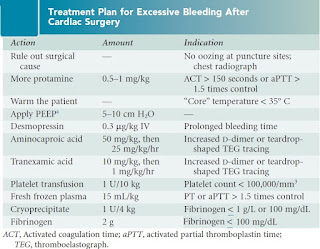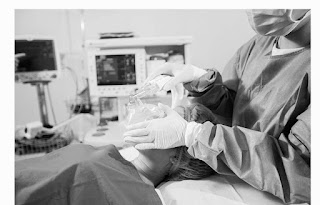Treatment Plan for Excessive Bleeding After Cardiac Surgery
Adjunctive Therapy
Warming
Bleeding patients with core or intermediate zone temperatures less than 35°C will benefit from warming efforts, both passive (warm ambient temperature, adequate body coverings, low-ventilator fresh gas flows, airway heat and humidity exchangers) and active (heated humidifiers, warmed intravenous fluids, forced-air convective warming blankets). All too often, in the effort to maintain intravascular volume, ICU personnel administer liters of room-temperature (≤20°C) or refrigerated (0°C–4°C) fluids, which render patients hypothermic.
Positive End-Expiratory Pressure
One popular method to limit bleeding after cardiac surgery is application of positive end-expiratory pressure (5 to 10 cm H2O). A tamponade effect in the mediastinum may explain this salutary effect. Unfortunately, controlled studies have not confirmed this benefit. In addition, excessive pressure impedes venous return, worsening hemodynamics in the patient with hypovolemia.
Blood Pressure
Maintenance of systemic blood pressure in the low-normal range promotes tissue perfusion while limiting leakage around suture lines. Adequate depth of anesthesia during surgery and sufficient postoperative analgesia and sedation should be verified before initiating vasodilator therapy



